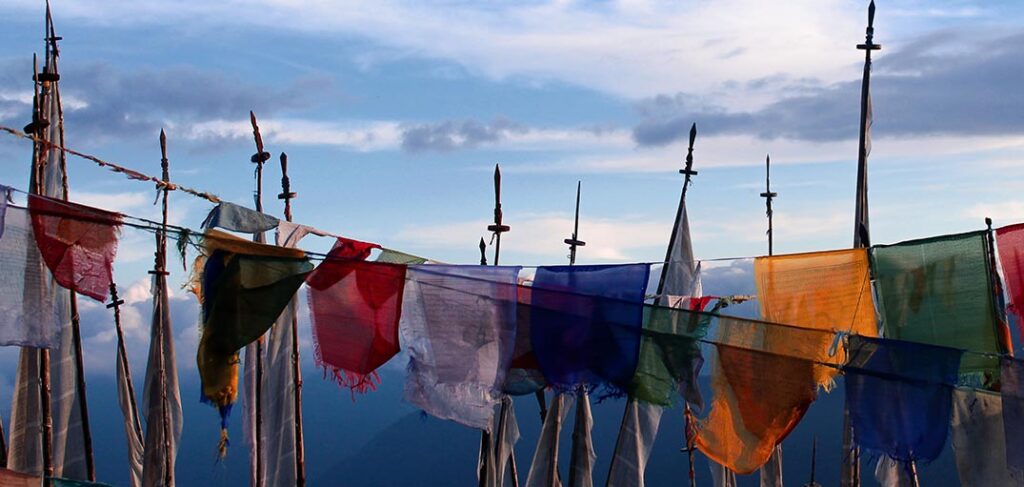
Travel inspires us, gives us some perspective. It leads us to new experiences and some pretty incredible places. If you haven’t made your next travel plans yet, Bhutan may be the next stop on your journey toward inspiration.
This exciting luxury travel to Bhutan around the country’s highlights will introduce you to the enigmatic kingdom of Bhutan. Hike through lush green valleys with the guide of a luxury travel expert, enjoy views of soaring mountain peaks, and trek to the iconic Tiger’s Nest Monastery. You’ll learn about Bhutan’s fascinating culture and history along the way.
The country has some great views and unique places ideal for a family trip to Bhutan. This blog looks at 8 of these highlights and why they are popular.
1. Hike The Sacred Path To Tiger’s Nest, Bhutan’s Most Iconic Temple.
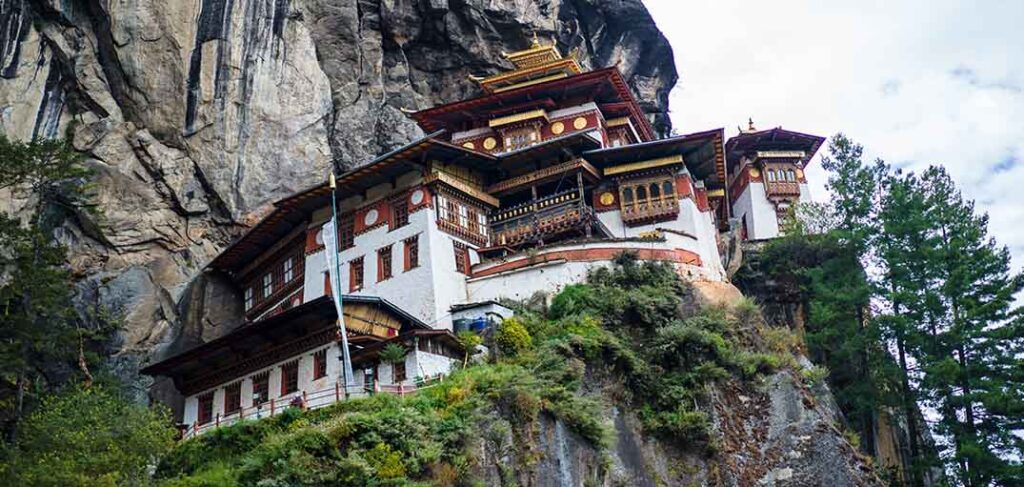
Hiking to the Taktshang Lhakhang is a must when you are on a family trip to Bhutan. Also known as the Tiger’s Nest Monastery, the monastery is one of Bhutan’s most sacred pilgrimage sites. The monastery, built into the side of a cliff at 3,000 meters (10,000 feet) above the valley floor, will reward you with spectacular views as you hike uphill.
The temple itself has a fascinating history and is built in a unique style. Many murals similar to Thangka’s painting can be found throughout the halls. Since the temple’s room is so small, people can fully appreciate these magnificent statues up close.
The temple is a 2-hour steep hike that takes you through a beautiful pine forest and up into the mountains. During the hike, you can take a break for a cup of tea while taking in the beautiful scenery. Guru Rinpoche, the founder of Bhutanese Buddhism, entered the valley on the back of a tigress over a millennium ago and meditated for three months in this cave. Enjoy the two- to three-hour hike to the monastery, surrounded by quiet nature sounds and chanting monks. Make the most of your luxury travel to Bhutan with the stunning view of Taktshang Lhakhang.
2. Visit The Ancient Fortress Of Punakha Dzong.
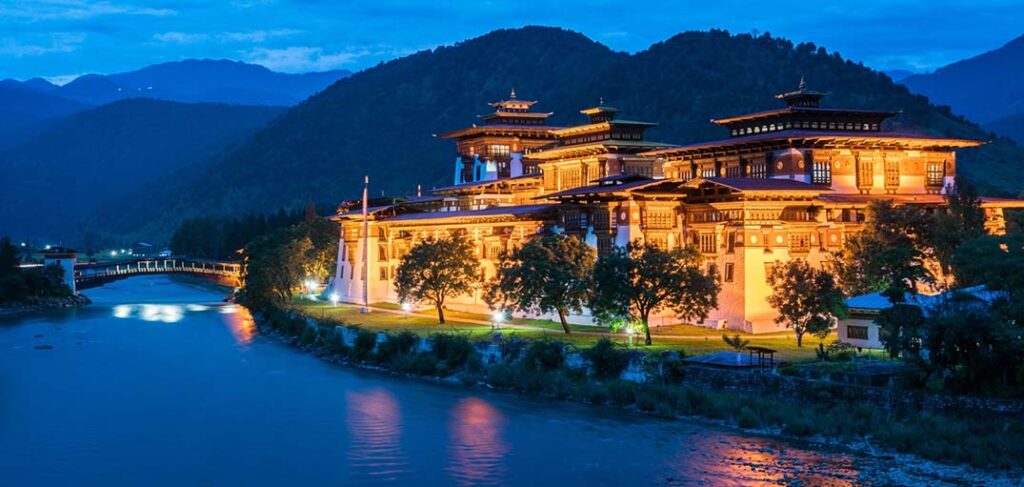
Punakha Dzong is situated at the beautiful Pho Chhu and Mo Chhu rivers in Western Bhutan. Punakha Dzong translates to “palace of happiness.” It is one of Bhutan’s most ancient and largest suzerain cities.
Punakha Dzong served as Bhutan’s capital and government until the mid-1950s. With its gleaming white walls and intricate roofs, the fortress is frequently referred to as one of the most beautiful in the country. The views from the town’s towers are spectacular. The Dzong is ideal for architecture enthusiasts. Guests are usually not allowed to enter the main altar when monks migrate here for the winter, but it is worth seeing outside.
3. Explore The Outdoors (hiking, white water rafting, and cycling).
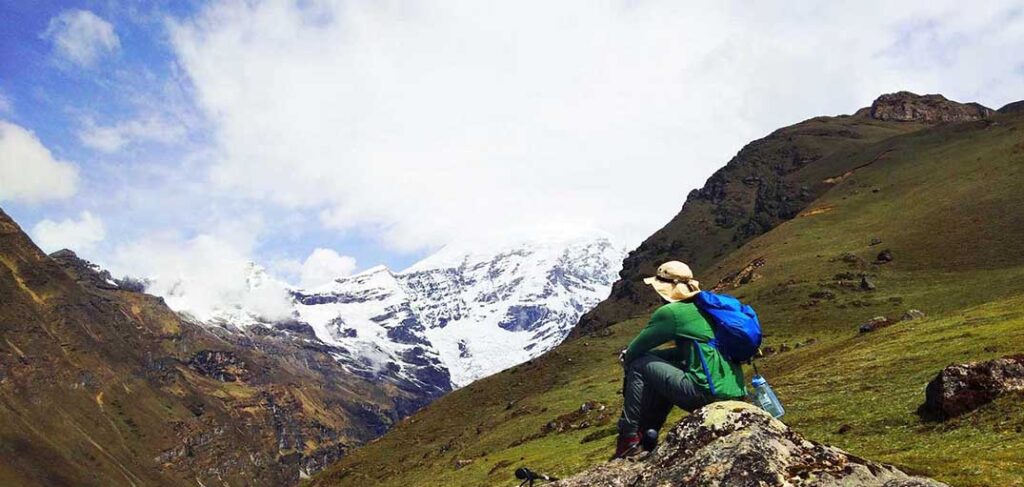
With our professional team, get up close and personal with the dazzling Jomolhari Mountain while traversing a high-altitude Himalayan landscape and camping under the stars.
Refresh your mind by hiking through an open landscape of high ridges and snow-capped peaks. You can stay in some of the best campsites in Bhutan and take a short day hike to see incredible lakes near Mt. Jomolhari and its glaciers up close.
4. Safe And Amazing Riverafting.
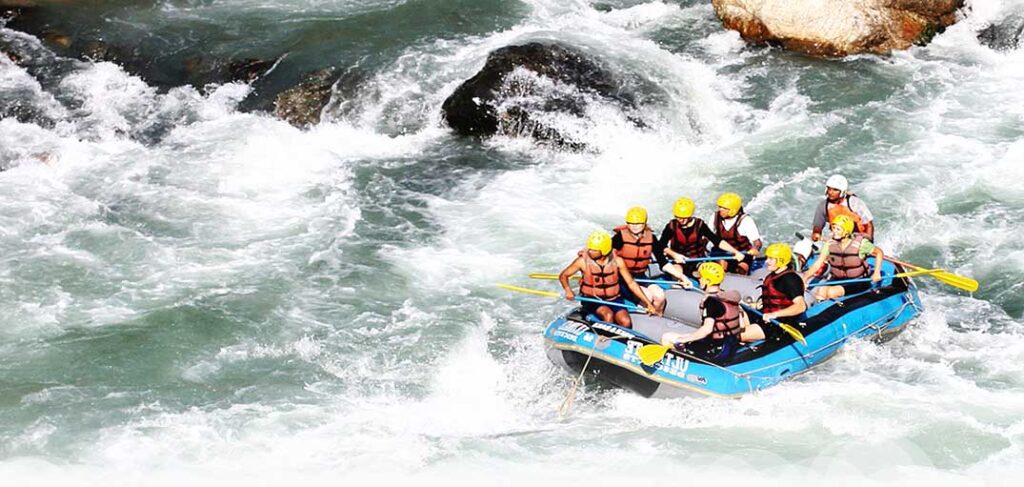
In Bhutan, the Mo Chhu River, which means “Female River,” is one of the most popular rafting and kayaking destinations. Our 7-day Bhutan river rafting tour will take you on a once-in-a-lifetime trip down the Mo Chhu River, featuring easy Class I and II rapids and stunning scenery. Additionally, you will visit the heritage sites in Paro Valley and Thimphu.
5. Explore Thimphu, The World’s Only Capital Without Traffic Lights.
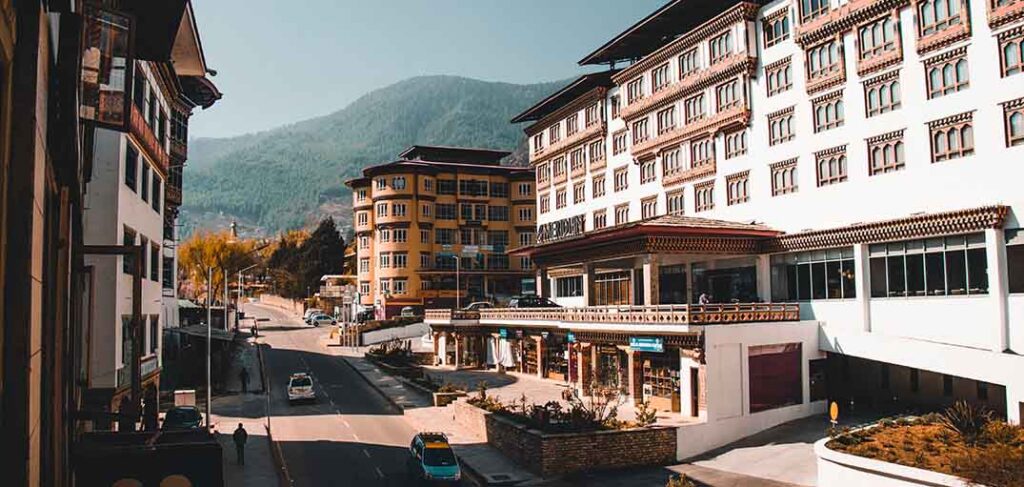
Thimphu, Bhutan’s capital, allows visitors to escape the usual tourist traps and become part of something special. Thimphu is a fascinating mix of modern and ancient architecture. Traffic police are frequently seen manually controlling traffic in one of the world’s few capitals without traffic lights.
Tashichho Dzong is the city’s most famous landmark. From its courtyard you can see the King’s Office. It is a magnificent and beautiful structure showcasing Bhutanese architecture at its best. Also worth seeing are the National Memorial Chorten and the Folk Heritage Museum. A visit to the National Library will provide you with access to some important Buddhist documents. To see a peaceful sunset, go to Kuensel Phodrang hill. A massive statue of Buddha Dordenma stands atop the mountain, overlooking Thimphu.
Walk through the city center and stop for a cappuccino at one of the roadside cafes. It’s easy to see how the new business boom blends in with the old traditional culture.
6. Observe Wildlife, Including The Rare Black-Necked Cranes.
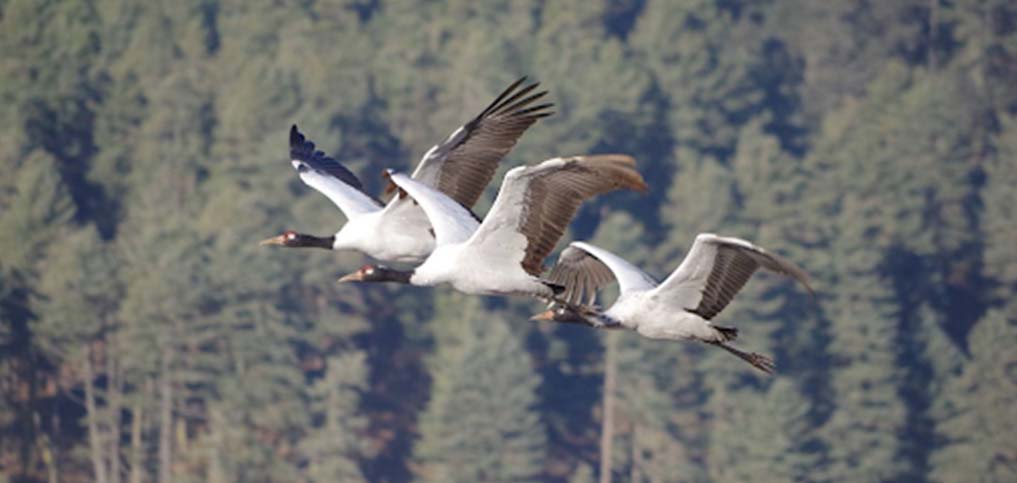
The Phobjikha Valley, set against the backdrop of the Black Mountains, offers breathtaking views of green fields. Wangdue Phodrang, also known as Gangtey, the black-necked crane, calls it home. It has the most cranes in the country and has been designated as a crane protection area.
The valley is cold, vast and amazing during the winter months and pleasant, serene the rest of the year. The valley is 3,000 meters (10,000 feet) above sea level. To avoid the harsh winter, the black-necked crane migrates from Tibet. The cranes arrive at the end of October and remain until mid-February. Birdwatchers will love this place, and it’s even better if you’re a nature photographer.
The Phobjikha Valley has several hiking trails with some of the most beautiful views of the landscape. Visit villages to get a sense of what life is like in the countryside.
7. Drive Along With Majestic Mountain Passes.
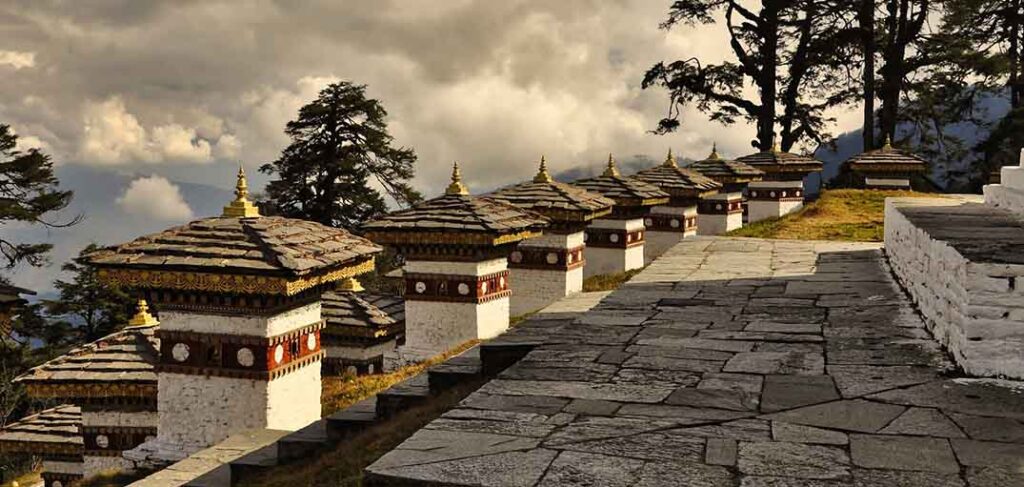
Drive through the Dochula Mountain Pass, which offers breathtaking views of the Himalayan peaks. Pass through majestic mountains, beautiful forests, and lush valleys on scenic drives through the countryside, and meet locals during farmhouse visits and village excursions.
8. Attend A Colorful Bhutanese Festival.
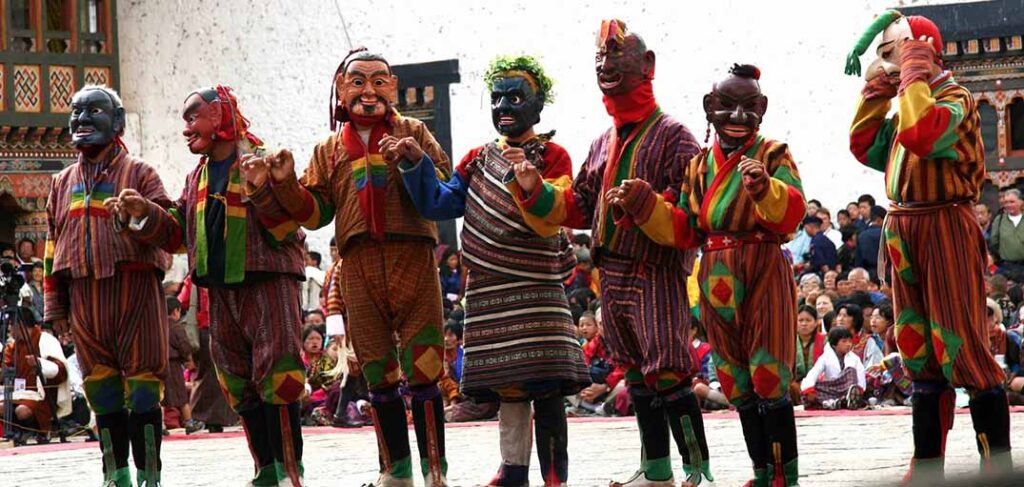
Take part in this incredible festival at least once to see the unique mask dance and get a glimpse of real Bhutan with a welcoming community. Bhutan hosts some religious and popular festivals that have become popular tourist attractions for many visitors.
Tshechu is a religious festival commemorating Guru Rinpoche’s birthday, the man who first introduced Buddhism to Bhutanese people. Bhutan celebrates it on the tenth day of the month. The same month of Tshechu, on the other hand, varies from place to place and temple to temple.
A prayer ceremony and a mask sword dance performance are held during the festival. Across the country, there is a celebration. In terms of participation and audience, Paro and Thimphu are two of the most popular Tshechus in the country.
The Paro Tsechu Festival is held every year in early April or late March to commemorate Rinpoche and lasts for 4 to 5 days. A large religious painting of Buddha will be unveiled on the festival’s final day.
In honor of Guru Rinpoche, the Thimphu Tsechu Festival is held in the capital for three days. The celebration will take place in September, and it will be one of the most memorable experiences of your life. It’s also a social gathering for Bhutanese people, with beautiful clothing, jewelry, and food on display.
Hope you enjoyed the 8 travel highlights to Bhutan. You now may have a little understanding of what to expect from this ancient country. You can experience most of the above places and events during your first trip to Bhutan.
If you enjoyed this, you may be interested in 10 must-do things in Bhutan.
Learn more here – https://karmabhutan.com/10-must-do-things-in-bhutan/
Click the link to learn about 7 Spiritual steps to being successful in Business.


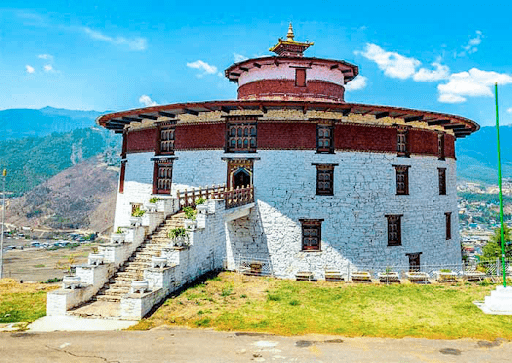
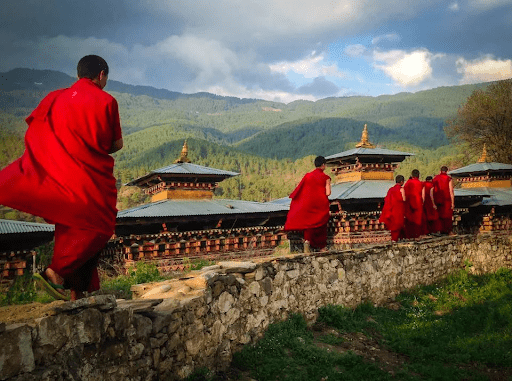
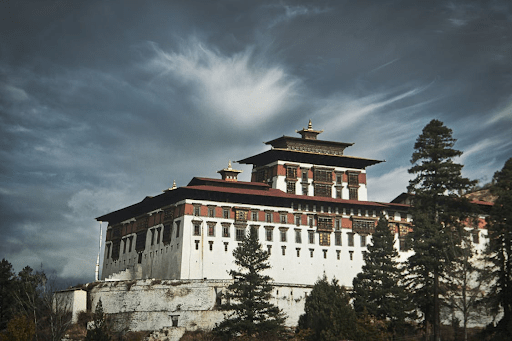
Recent Comments